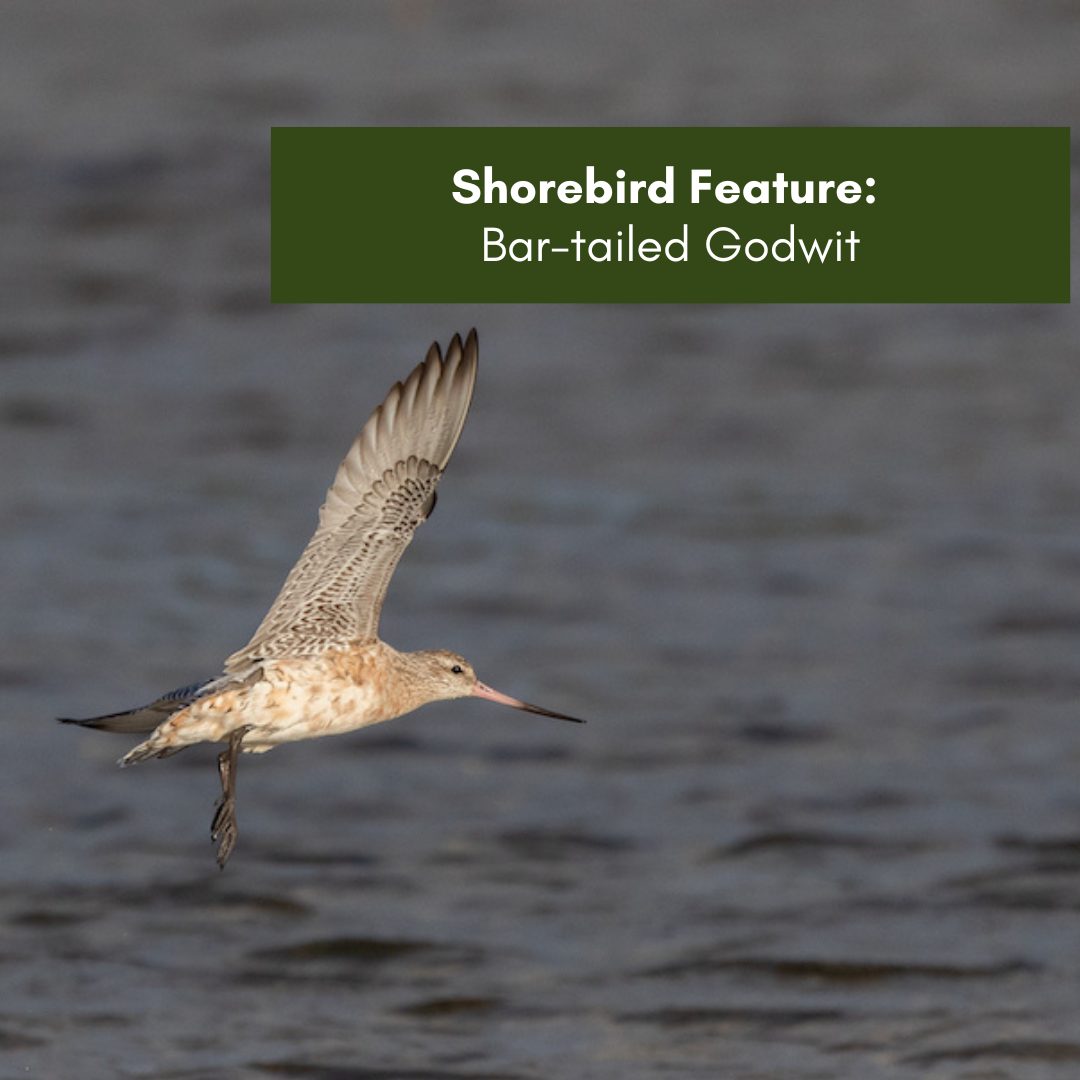Last month, migratory shorebirds made global news headlines for setting a new World Record for the longest continuous migratory flight.
Previously held by another Bar-tailed Godwit (Limosa lapponica subsp. baueri), the juvenile flew for 13 560km over the Pacific Ocean, without stopping for food or rest. The distance was covered in 11 days and 1 hour, equating to 265 hours of non-stop wing flapping!
The 5 month old Bar-tailed Godwit, known by its tracking number “234684”, was tagged in Alaska this year as a hatchling during the Northern Hemisphere Summer, and fitted with a light-weight GPS chip and solar panel.
This allowed an international research team to document its maiden flight from Alaska to Tasmania, Australia, where the juvenile migratory shorebirds stay for a year or 2 to mature to breeding age. Then, they will join their parents in the annual migration to the Arctic Tundra to reproduce.

Photo by James Bennett @jamesbennettbirds
Bar-tailed Godwits and other Migratory Shorebirds have developed some mind-boggling physical adaptations that allow them to cross vast stretches of ocean without stopping, as Shorebirds are not able to land on water or dive for food during this journey.
For example, their impressive ability to shrink ‘non-essential’ muscles and organs prior to migration and enlarge their flight muscles, hearts and fat-reserves to sustain their continuous exertion.
A 1998 study by Dr T. Persma from Groningen University and Dr R. Gill from the U.S. Geological Survey, revealed that “the godwit absorbs up to 25% of the tissue comprising its liver, kidneys, and alimentary canal. Only when the bird completes its migration are these organs reformed in their entirety”. (Source )
The discovery of this adaptation reiterates the global significance of Australian Shorebird Habitat, as these migratory birds spend 50% of the year at our shores – resting, recovering and preparing for their next flight…and regrowing internal organs!
It’s important that their foraging resources remain at sufficient levels, roost habitats remain intact and disturbance is limited to support the capabilities of these World-Class flying machines.
The Hunter Estuary is the most significant piece of Shorebird habitat in NSW.
To do your bit for our Shorebirds, join in our training workshops, field days, shoreline cleanups, Citizen Science Surveys and/or Coastcare Groups (Get involved).
Sources:
https://asknature.org/strategy/organ-changes-enable-long-migration/
https://www.adn.com/alaska-news/wildlife/2022/10/30/a-juvenile-shorebird-tagged-in-alaska-flew-nonstop-for-11-days-and-arrived-in-tasmania/
Additional Reading:

